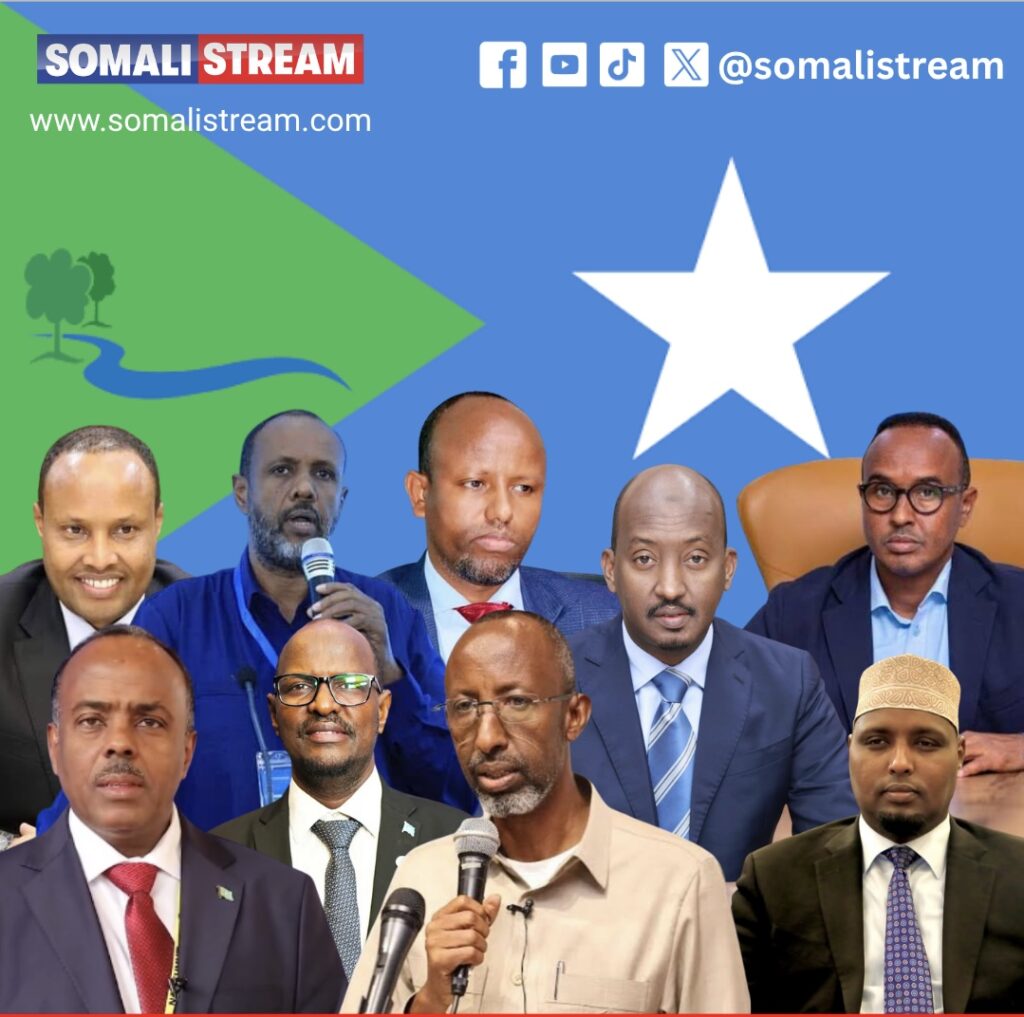As Hirshabelle marked its ninth anniversary since its founding, the celebrations sparked both pride and debate across Somalia. In towns across the Federal Member State and on social media platforms, people shared reflections on what the milestone truly represents: progress achieved, promises unfulfilled, and the question of who bears responsibility for the region’s stalled development.
Public reactions were split in two camps; those praising Hirshabelle’s efforts to build institutions despite challenges, and those critical of what they see as years of stagnation and dependency on Mogadishu. At the heart of this debate lies a deeper question about Somalia’s federal experiment: is Hirshabelle a self-governing entity or an extension of the capital’s politics?
For many, the state has become symbolic of a structural dilemma in Somalia’s federal system. Although constitutionally autonomous, Hirshabelle has long been viewed as an unofficial “17th district of Mogadishu” a reference to its heavy reliance on the Federal Government and its shifting political alliances depending on who occupies Villa Somalia.
A fragile federal balance
The relationship between Hirshabelle’s leadership and Mogadishu has rarely been stable. While both administrations currently maintain a working relationship, much of Hirshabelle’s internal politics remain influenced even constrained by Federal Ministers who hail from the same region but serve at the national level.
These dynamics have created layers of political tension, with Federal Ministers often accused of undermining the very state they represent, either by withholding projects, sidelining state institutions, or engaging in political rivalries that ripple back home.
Ironically, Hirshabelle is the Federal Member State most represented in Somalia’s cabinet, yet it remains one of the least developed. Several key ministries and federal institutions are led by officials originally from Hirshabelle, but whose political interests do not always align with those of their home state.
Among those often mentioned in local political debates is Minister of Planning, Mahamud Sheikh Abdrahman Beenebeene, a native of Hiiraan. Once a powerful political figure in the region, he has been accused by critics of prioritizing national ambitions over local development. His long-standing rivalry with his clan counterpart, Mahamud Abdi Ali, who holds the same portfolio at the Hirshabelle level, has reportedly hindered cooperation and delayed project funding.
Similarly, Minister of Education, Farah Sheikh Abdulkadir, widely respected for his earlier contributions to Somalia’s education system, faces criticism over stalled educational programs in Hirshabelle. His disagreements with Hirshabelle’s leadership, have reportedly resulted in the suspension of key education projects.
After Hirshabelle dismissed former Minister Mohamed Mohamud Abdulle (Dheere), he was appointed Special Projects Advisor at the Federal Education Ministry, where he maintained significant influence over educational matters. Just a week ago, Mohamed Dheere was also named Director of Accountant General at the Finance Ministry, a new role that positions him to pose a challenge to Guudlaawe’s leadership.
The Minister of Health, Ali Haji Adam, elected from Beledweyne, finds himself caught in a complex web of political and clan rivalries. Although personally viewed as a neutral technocrat, several members of his political faction have been accused of using influence to block health-related programs, including the World Bank–funded “Damal Caafimaad” initiative that was suspended in Hirshabelle.
In the fisheries sector, Minister Ahmed Hassan Adam, who once represented Hirshabelle in parliament but lost his seat in the last election has also been linked to delays in reviving plans for a fish processing plant in Cadale, a coastal town with untapped potential for marine industry growth.
Power and Proximity
Other officials from Hirshabelle who hold national influence, such as Minister of State for Foreign Minister Ali Omar Balcad, wield considerable political weight in Mogadishu. His long-standing rivalry with Hirshabelle President Ali Guudlaawe has deepened political fractures, making collaboration on development projects nearly impossible.
In another twist, Villa Somalia has allegedly thrown its support behind Abdullahi Mohamed Nur, former Minister of Internal Security and, until recently, Director of Tubsan, a PCVE center operating under the Prime Minister’s Office, as a potential successor to Ali Guudlaawe.
Abdullahi finds himself at the heart of an active armed conflict and faces accusations of mobilizing militias in Middle Shabelle, claims that Somali Stream has not been able to independently confirm. Nonetheless, senior officials in Hirshabelle State have informed us that Abdullahi enjoys the support of President Hassan Sheikh and is under close observation by the state leadership.
Meanwhile, Mahmoud Ma’alim Abdulle, head of the National Disaster Management Agency (SoDMA), faces public scrutiny for what many in Hiiraan saw as an inadequate humanitarian response. His agency’s relief efforts; once criticized for distributing only a few boxes of supplies during intense floods and conflict have come to symbolize the perception that federal interventions often overlook Hirshabelle’s real needs.
During the anniversary ceremony in Jowhar, Hirshabelle’s leadership showcased unity and optimism, celebrating what they described as a “journey of resilience.” Yet, the event also underscored the state’s limitations: the absence of key federal representatives and the muted tone of the celebrations stood in stark contrast to the grand ceremonies seen in other regional capitals.
For many observers, Hirshabelle’s predicament is both a reflection and a warning; a story of a state whose progress is held back not only by internal divisions, but by the wider politics of federal Somalia.
As one local proverb says, “A cow cannot rise if the rope is still tied around its neck.” In Hirshabelle’s case, the rope is political, and until it is loosened, the state may continue to rise only as far as others allow it to.


